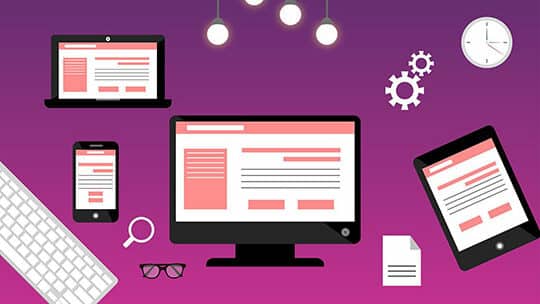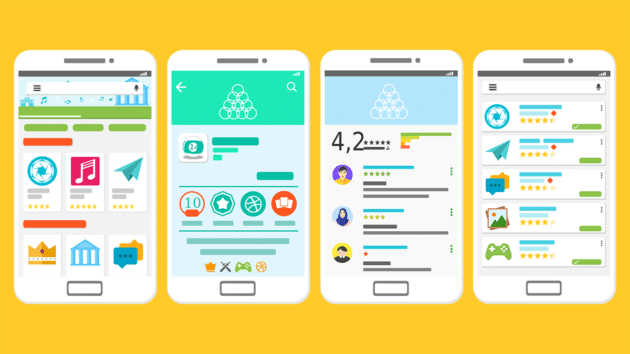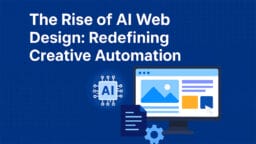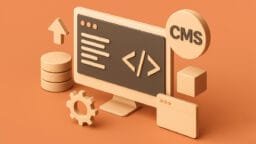As interfaces grow and diversify, so too do the trends responsible for their upgrading increase in sophistication. People are done with clumsy sites that don’t function properly, and it is becoming commonly understood that providing better, cleaner, and more accessible options are a necessity for businesses hoping to stay alive.
Similarly, overall user experiences are improving with increased UX specialist attention to product features such as branding, design, and usability. So, what are the big trends in UX and UI design this year? Let’s take a look at each category and see what we have to look forward to.
UX design trends in 2023

Recommended for you: 6 Really Good iOS App Development Trends for Better Results.
1. Increased personalization
As with many other features of digital life, advances in AI and related technologies are allowing for much-increased levels of personalization these days. It is becoming increasingly well-known that UX designs are traditionally created to favor businesses, rather than individuals. In fact, these designs that work primarily to the disadvantage of the individual have a name: they are referred to as “dark patterns”.
In order to minimize the number of dark patterns in the UX experience, industry experts are creating stricter standards for the creation of designs. They are also de-emphasizing design aspects that previously favored companies over individuals, such as prioritizing the number of visitors or numbers of subscriptions.
2. Accessibility standards
Another feature that is becoming standardized in the UX world is accessibility. The EU has created an accessibility standard, due to be made into law in 2025, that mandates accessibility for persons with disabilities. Other countries are also creating similar standards, and the goal is to have universal accessibility within a short period.
Of course, in reality, this will probably take longer to implement on an international scale than people hope, but the fact that legislators are actually taking concrete steps in this direction is laudable. And activists will certainly continue to push for more.
3. Increased cross-device access
How often do we find ourselves starting a project on one device and then throwing our hands up later because we want to continue on another, but our apps don’t allow for it? Designers are well aware of this frustration, and 2023 will see vast improvements in things such as cross-device payment mechanisms, design sequences, and even cutting and pasting!

What’s more, this interdependent functionality applies not only to devices but also to apps. So, we should find ourselves wasting a lot less time trying to figure out how to carry out our online business in all of the forums we use.
4. New trends in the nature of designing
“For most of the history of design development, creators have focused on producing better and better products. They created the systems, and the designers used them. With the rise of new coding platforms, designers will soon have a greater say in how they want the programs they work with to be constructed. And this will lead to even more natural and creative-looking designs.” – as mentioned by Marc Caposino, the CEO of Fuselab Creative, in one of his recent articles.
Another interesting consequence of this trend is that the world of coding will become demystified to some extent. Once thought to be the exclusive realm of a select few, bringing these tools to a wider audience will help to integrate the various people involved in digital creation to a much greater degree than previously.
5. AR is set to take off
2023 will also see wider use of AR on a greater number of platforms. It will become more widely used in business, as well. Businesses of different sorts will start using AR to provide users with immersive digital experiences. This includes such areas as retail, which will take customers through AR product displays; restaurants, which will be able to create interactive menus; tourist sites, which will take visitors on virtual tours of their areas; hotels, which will be able to offer potential guests AR tours; and many more industries.
UI design trends in 2023

2023 is also going to see big improvements in UI. Some of the big items on the horizon this year include the following:
You may like: Top 15 Software Technology Trends of Today.
1. Advancements in typography
Designers know that users become frustrated with limitations in typography. 2023 will see major strides taken in areas such as gigantic typography. Gigantic typography will work to the benefit of companies that use particularly large screens. While we might think it novel to see photographs from the ‘20s and ‘30s blown up in Times Square in halftone, more often than not we’d like to see large photos as accurately as possible.
In order to accomplish this, designers are moving away from the use of sans serifs, in favor of a wider array of serifs that allow for a greater degree of precision in large-sized fonts.
2. Improved micro-interactions
A similar advancement is in the refinement of micro-interactions. Devices will be able to alter their interfaces more readily and in greater amounts based upon single actions of users. Swipe animation, scrollbars, and other UI features will become more sensitive and will be able to respond to user behavior in a much more sophisticated manner.
3. Immersive experience
Designers are getting on the ball about sensory overload. While there have been periods where companies (both manufacturers and web designers) thought that more was better in terms of the number of different graphics on a given page, major companies are definitely becoming increasingly aware of the advantages of minimalism.
In doing this, users are able to focus on the most important elements on a given page. And with improvements in graphics, video quality, and animation, the overall user experience is more meaningful as a result. Designers refer to this as an “immersive experience”.

4. Increased use of AI
With UI too, AI is taking over. Not only will designs become more personalized, but photo programs and other design tools will be able to create more and more refined products based on commands made by users.
Along with improved appearance will come increases in speed and efficiency, as well. AI calculations are starting to function in almost frighteningly real-time, leaving users stunned at the results they witness pretty much the moment they request them.
A related feature is generative AI, which is also set to take off this year. Generative AI is a true gift for designers as design commands can result in whole spectra of possibilities for designers to choose from. This feature is likely to bring about innumerable product ideas that designers basically didn’t even know they had.
Perhaps ironically, there is some concern that AI advancements will exclude some disabled people from full usage. And this is despite the efforts being made to create more inclusive legislation. There will certainly be some degree of push and pull as far as accessibility and development are concerned. There will be pressure on designers to keep people with disability in mind when creating more and more sophisticated algorithms.
Some experts also worry that AI might actually make the UI experience too uniform in the future. While this has yet to be seen, it serves as an example of just how mysterious the AI world is and why we shouldn’t make too many assumptions about the way it works.
5. New interface modes
Remember the days of “eye-sensitive” paper? Hopefully not, as it was nothing worth remembering, but there was such a thing, and its appearance was objectively hideous. For whatever ungodly reason, manufacturers used to think that super bright yellow notepads were easier on the eye than white ones. In any case, the point is that people have different preferences when it comes to the colors they like to look at.
Designers are on to this, and they’re creating new modes for people to look at their devices on. Many a debate has already been had about light mode vs dark modes, and options are proliferating even further to include such things as “futuristic UI” and “anti-light” modes. Not only are these modes considered sleeker and more trendy than their light counterparts, but they are also more energy efficient and supposedly easier on the eye.
There will continue to be devotees of old-school white screens, of course (and your author is among them). While some manufacturers are switching to exclusively dark screen models, some will retain traditional light screens for people attached to them.
Also, certain industries such as banking and related areas that use a lot of numbers won’t see a switch to dark mode any time soon because the dark screens are not favorable to this. And these industries don’t want to appear funky and fashionable; they want to be seen as stable and straightforward.
You may also like: The 5 Biggest Technology Trends in 2023 Everyone Must Get Ready for Now.
Looking ahead to 2024 and beyond

As you can see, the trends and news are mostly positive for the world of UX and UI design. Designs are becoming smarter, more streamlined, and more personalized all the time. With large-scale changes will eventually come reductions in cost and labor, as well. There is, of course, some degree of uncertainty about where exactly AI and AR are taking us. But for the moment we should enjoy the upgrades that are taking place. Take advantage of our improved user experiences as much as possible.






